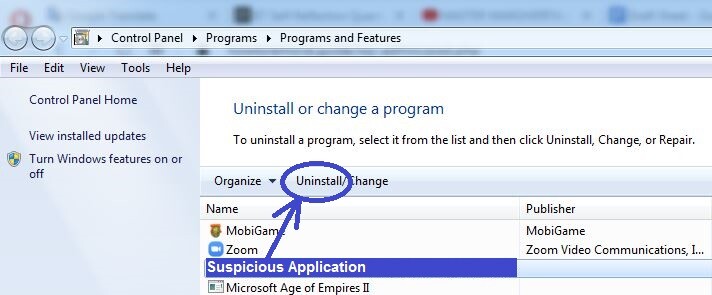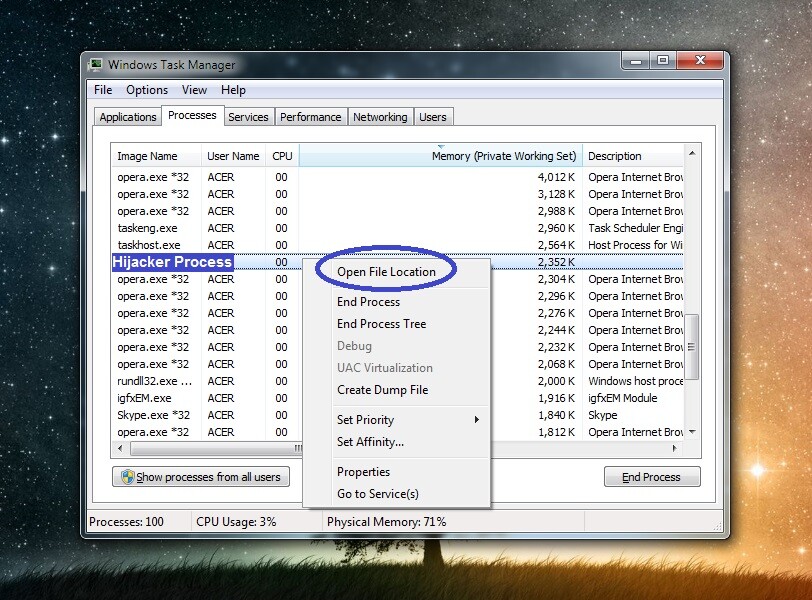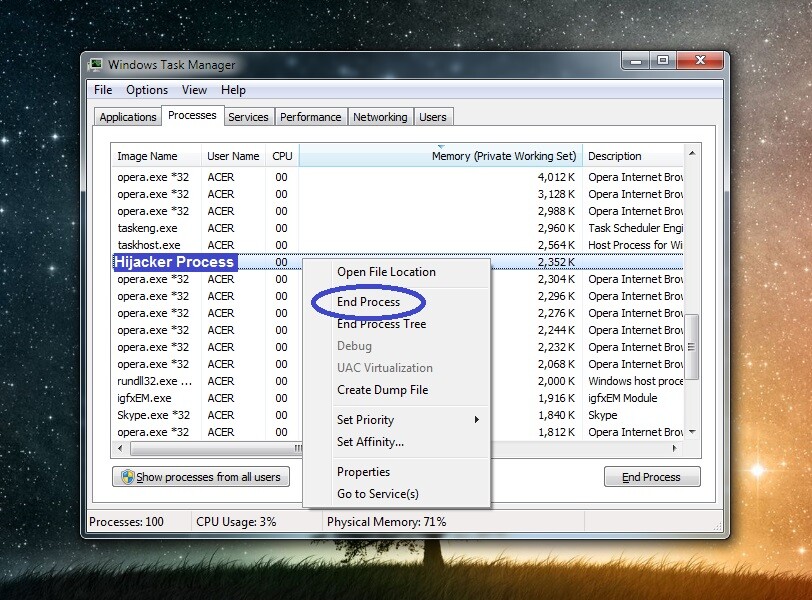
*Qotr is a variant of Stop/DJVU. Source of claim SH can remove it.
Qotr
Qotr is a ransomware virus developed to extort money from web users through encryption. Qotr specializes in file encryption and blocks access to valuable user data in order to ask a ransom for its liberation.

One of the latest additions to the noxious malware family known as Ransomware is called Qotr and, on this page, we will discuss its characteristics. Qotr is a cryptovirus that secretly encrypts valuable user files, in this way preventing them from being opened or used, and, on top of that, demands money for their decryption.
If you’ve landed on this site, we’ll assume you’ve also fallen victim to Qotr and are now looking for a working solution to help fix this situation. That’s why we will point your attention to the removal guide below and the professional Qotr removal tool attached to it. Hopefully, with their help, you will be able to remove the ransomware and potentially regain access to some of the encrypted files without paying a ransom. In the removal guide, there is a separate section with a set of instructions on how to recover your files from system backups. But before we move any further, we must warn you that ransomware is considered as one of the hardest malware to deal with so you should be aware that there is no solution that can guarantee a 100% recovery from its attack.
The Qotr virus
The Qotr virus is a ransomware threat developed to block access to digital information through encryption. The Qotr virus can attack anyone and can render their files inaccessible until they pay a ransom.
Ransomware viruses do not function like most other forms of malware, which is what separates them from other virus infections. That’s also the secret that helps such threats to remain under the radar of most security programs and to complete their file encryption without being interrupted. Threats such as Qotr and Qoqa, Qowd basically use encryption to block certain types of files and thus prevent anyone from opening them. The file encryption, however, is not a damaging process but only a way to protect data. Therefore, very few antivirus programs will actually see it as a threat even if they detect it in the background of the system. And for that very reason, they are unlikely to notify you about what is happening or stop the ongoing attack. So, due to this, detecting ransomware while it’s still at work is nearly impossible.
The Qotr file
The Qotr file is a file that has been encrypted by the Qotr ransomware. The Qotr file may have a different extension and may return an error message every time you try to open it.

Most of the victims of Qotr who have to face the fact that their personal information has been locked may turn to the ransom payment as the only possible solution. Yet, security experts warn that this is not a very good idea. The reason is, it is not uncommon for the victims to eventually get left with empty pockets and encrypted files even after they have transferred the money to the hackers. In many cases, the criminals just receive the ransom payment and then don’t send back the decryption key needed to regain access to the encrypted data. There are also cases where the victims receive a decryption key which does not work properly and fails to do its job. That’s why we’d suggest finding other ways to handle the Qotr virus and infections like it. The removal guide below, for instance, can help you remove the ransomware and we highly recommend that you make use of it because failure to do so may cause more harm to your device and to the data stored on it.
SUMMARY:
| Name | Qotr |
| Type | Ransomware |
| Danger Level | High (Ransomware is by far the worst threat you can encounter) |
| Detection Tool |
We tested that SpyHunter successfully removes Qotr* and we recommend downloading it. Manual removal may take hours, it can harm your system if you re not careful, and Qotr may reinstall itself at the end if you don’t delete its core files. |
*Qotr is a variant of Stop/DJVU. Source of claim SH can remove it.
Before you begin this guide The following points need to be taken into account before starting the guide’s steps:
- Before you start completing the removal instructions, be sure to unplug any flash memory sticks, external HDDs, phones, tablets, or other devices that can store data from your computer to stop the virus from encrypting whatever data is stored in those devices.
- You must disconnect the PC from the web to make sure Qotr doesn’t communicate with the servers of its creators.
- Though we advise against paying the ransom, if you still decide to do it, it’s better to postpone the virus removal for after the payment is made and the decryption key has been received. If you remove the virus, you may never get the key even if you pay.
- The Ransomware may seem to have disappeared from the system, but even in such cases it’s still advisable to go through the guide and complete all of its steps.
Qotr Ransomware Removal
To remove Qotr and ensure it doesn’t lock more files in the future, these are the steps that must be performed:
- It’s likely that a rogue program has infected you with the Ransomware, so search for any such programs in your system and uninstall them.
- Check for still running malicious Ransomware processes and if you find any, quit them and delete their folders.
- Look for remaining malware data files and delete them too.
- Clean the Hosts file, the Startup items, and the System Registry to remove Qotr for good.
If you need help with one or more of these steps, you will find detailed instructions for each of them down below.
Detailed removal instructions
Step 1 Look for the Control Panel icon in the Start Menu or search for Control Panel using the Start Menu search bar and open the Control Panel. From there, go to Uninstall a Program and look for any newly-installed items that may have secretly carried Qotr into your PC. If you find anything suspicious or unknown, select it, then evoke its uninstallation wizard by clicking the Uninstall button from the top, and complete the removal process. Be sure to disable any options in the uninstaller that would allow any data or settings related to the unwanted program to stay on the computer.

Step 2
WARNING! READ CAREFULLY BEFORE PROCEEDING!
*Qotr is a variant of Stop/DJVU. Source of claim SH can remove it.
Press [Ctrl] + [Shift] + [Esc] to start the Task Manager and look for unknown/suspiciously-named processes with excessive CPU and/or RAM memory consumption, and use the following two methods to determine if those processes are harmful:
- Go to Google, Yahoo, Bing, or another trusted search engine and look up the name of the process that you suspect. If it’s truly a threat, the chances that there would be posts on security forums that confirm your suspicions are high, and that way you will know that the process in question is most likely a rogue one.
- Right-click the process in question, click the first option from the menu to go to its File Location, and scan whatever files you see there with the free scanner you’ll find right below. If one or more of the tested files are detected as malicious, this would confirm that the process, too, is a threat. Each file will be scanned with up to 64 antivirus programs to ensure maximum accuracyThis scanner is free and will always remain free for our website’s users.This file is not matched with any known malware in the database. You can either do a full real-time scan of the file or skip it to upload a new file. Doing a full scan with 64 antivirus programs can take up to 3-4 minutes per file.Drag and Drop File Here To Scan
 Analyzing 0 sEach file will be scanned with up to 64 antivirus programs to ensure maximum accuracyThis scanner is based on VirusTotal’s API. By submitting data to it, you agree to their Terms of Service and Privacy Policy, and to the sharing of your sample submission with the security community. Please do not submit files with personal information if you do not want them to be shared.
Analyzing 0 sEach file will be scanned with up to 64 antivirus programs to ensure maximum accuracyThis scanner is based on VirusTotal’s API. By submitting data to it, you agree to their Terms of Service and Privacy Policy, and to the sharing of your sample submission with the security community. Please do not submit files with personal information if you do not want them to be shared.

You must quit any process that is found to be malicious and also delete its File Location folder.

Step 3 You must make sure that Qotr doesn’t re-launch any of its harmful processes by putting your computer in Safe Mode.
Step 4
*Qotr is a variant of Stop/DJVU. Source of claim SH can remove it.
Go back to the Start Menu, search for “Folder options” and click on whatever shows up at the top. Select the View tab in the Folder Options window, find the Show hidden files, folders, and drives option, enable it if it’s currently not enabled, and click OK. Now copy the first of the lines listed down below, paste it in the search bar of the Start Menu, and hit Enter. Next, delete whatever data has been created after the virus infected you, and proceed to do the same thing with the other listed folders. Once you get to Temp, press Ctrl + A to select all files in that folder and then Del to delete everything.
- %AppData%
- %LocalAppData%
- %ProgramData%
- %WinDir%
- %Temp%
Step 5
Press the Windows key and R key together and type msconfig in the small window/search box labelled Run that opens. Press Enter to go to the System Configuration settings, then click on Startup in the top, and look for items you don’t recognize or that are with unknown developers (according to the list). Uncheck any such items you may find and select OK. Next, go to your computer’s C: drive (or the drive where the OS is installed if it isn’t C:), open Windows > System32 > drivers > etc, double-click on the file named Hosts, and choose to open it with Notepad. Then look for IP addresses or other suspiciously-looking entries shown at the bottom of the file, right below the second Localhost line. If anything is there, you must copy-paste it in the comments section on this page – we will take a look at your comment and get back to you soon, telling you if anything needs to be done about your Hosts file. 
Step 6
Be careful while performing this next step as it will require you to delete malware items from the computer’s Registry and if you end up deleting an item that mustn’t be removed, this could have severe consequences for the computer’s system. When in doubt, feel free to consult us through the comments section. You must first find the regedit.exe app by searching for it using the Start Menu search bar, and then you must select it and then select Yes, when asked for permission, to open it. Once the Registry Editor window shows up, press Ctrl + F and type Qotr in the search box. Then perform the search and delete whatever is found. Only one item at a time will be shown, so you must search again after every deletion to see if there are more Qotr items left in the Registry that you will need to delete.

Once the search is no longer finding any items related to Qotr, go to the three directories listed above by using the panel to the left and search in them for sub-folders (keys) that have long, unusual, and/or randomly-generated names – something that may look like this “0239ru983j98gh98dj98tgyt49jd9238jt9hf923d” for example.
- HKEY_CURRENT_USER > Software
- HKEY_CURRENT_USER > Software > Microsoft > Windows > CurrentVersion > Run
- HKEY_CURRENT_USER > Software > Microsoft > Internet Explorer > Main
If you come across such entries, let us know in the comments, and we will tell you if you need to delete them.
If Qotr is still in the system Oftentimes, Ransomware threats like Qotr are helped by Trojans, Rootkits, or other additional threats in order to sneak into the system unnoticed and then evade getting deleted by the user, which is one possible explanation why you may be struggling with the removal of this Ransomware. In such scenarios, what could greatly help is using a specialized malware-deletion tool that can take care of all malware present in the system at the same time. The tool we’ve linked throughout the guide is a perfect example of an anti-malware program that can do exactly that, and we highly recommend it to anyone who is having issues removing Qotr on their own.
How to Decrypt Qotr files
To decrypt Qotr files, it’s inadvisable to pay the ransom, as this could oftentimes do more harm than good because you could lose your money without getting a decryption key. Our recommendation is to try to decrypt Qotr files through the use of alternative means.
However, note that before you try any of the alternative recovery options, you must have thoroughly cleaned your computer so that there’s nothing left from the Ransomware in it (or else any recovered files may get locked again). Here, we once again remind you of the powerful powerful online scanner we have on our site that you can scan suspicious files with so that you can then delete anything that may be a threat.
Once the PC is clean, and it’s safe to proceed with the data recovery options, we suggest you visit our How to Decrypt Ransomware article, where you can find several data-restoration methods that do not involve paying anything to the hackers who have been trying to blackmail you.
Qotr is a malware tool used for blackmailing, which locks the files of its victims and keeps them inaccessible until a ransom is paid. Qotr informs the attacked user about the demanded sum through a ransom-demanding message that it automatically displays on the screen.
Ransomware is among the most widespread and problematic forms of malware, and it is known for attacking both individual users and entire companies, organizations, businesses, and even governments. A distinctive trait of this type of virus is that they typically don’t harm the system and operate in silence and with few to no symptoms while locking up the user’s files.
The locking-up itself is completed via a file-encrypting process that puts military-grade encryption on each targeted file, making access to it next to impossible without having the correct private key. Despite this, paying the hackers for that key is strongly discouraged by security experts due to the chance of never actually getting the key even after performing the ransom transaction.
Qotr is an advanced virus program that uses advanced data encryption to render the files of its victims inaccessible. It’s not uncommon for threats like Qotr to get downloaded into the targeted system with the help of a Trojan Horse that has previously infected the computer.
During the data-encryption process, it is unusual for Ransomware viruses to trigger any symptoms that could alert the user to the presence of the virus. Sometimes, increased CPU and RAM use that causes dips in the computer’s performance can get triggered by Ransomware, but it’s usually not enough to raise any suspicions in the user and make them further investigate the strange symptom.
Once the encryption is over, the malware automatically puts its ransom-demanding note on the screen of the infected computer, informing the user about the details of the ransom transaction. It’s common for Ransomware hackers to demand their ransom in the Bitcoin cryptocurrency because payments made in this currency are very difficult to trace, which helps the blackmailers remain anonymous and evade prosecution by the authorities.
To decrypt Qotr files, the best course of action is to first remove the Ransomware and then try the available alternative data-recovery options. You can also try to decrypt Qotr files by paying the ransom, but this hides lots of risks and is usually inadvisable.
The hackers simply deciding to not send you the private key for your files after you perform the ransom transaction is only one of the things that could go wrong if you decide to pay the ransom. Another possibility is that you could receive the key, but a mistake in its code may make it useless to you because it won’t be able to unlock your files. A third possible problem is if the virtual wallet included in the ransom note is no longer being used by the hackers, so even if you send your money to it, it won’t reach the blackmailers, and so they won’t send you the decryption key.
All in all, this ransom payment option should only be seen as a last resort variant in case everything else you’ve tried hasn’t worked and in case you really need your locked files back.

Leave a Reply